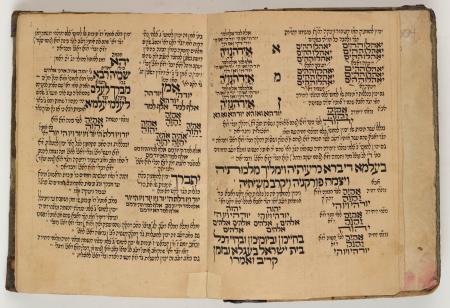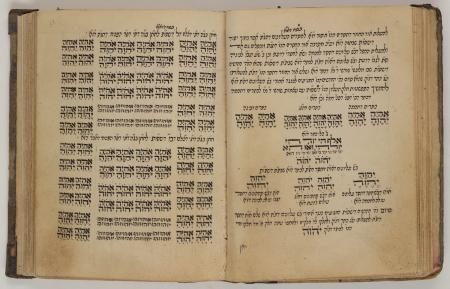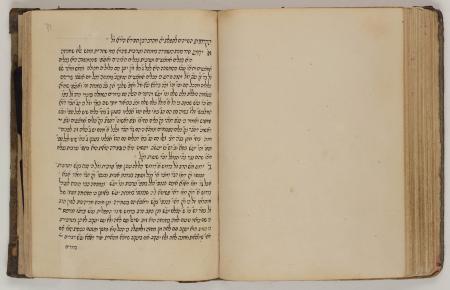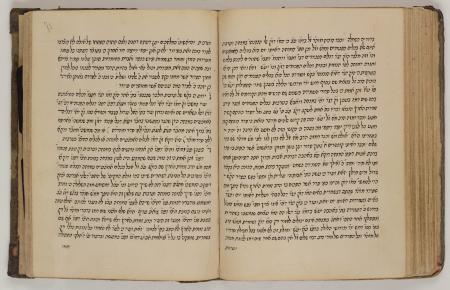Obj. ID: 53440
Hebrew Illuminated Manuscripts Sar Shalom ben Yitzhak Mizrachi Didya Shar'abi, Siddur ha-Rashash, Jerusalem, circa 1850

The following description was prepared by William Gross:
Sar Shalom Sharabi (Hebrew: שר שלום מזרחי דידיע שרעבי), 1720–1777, was a Yemenite-Israeli Jewish Rabbi, Halachist, Chazzan and Kabbalist. In later life, he became the Rosh Yeshiva of Bet El Yeshiva in the Old City of Jerusalem. His daughter married Rabbi Hayyim Abraham Gagin of Jerusalem, making him the great-great-grandfather of Shem Tob Gaguine, the "Keter Shem Tob."
The siddur was written by Yedidyah Rafael Abulafia, the head of the Bet El Yishivah in Jerusalem in the decades of the middle of the 19th century. His scribal versions of the Siddur Rashah are considered the most beautiful ever written. This is a fifth book that is the continuation of four manuscripts from his hand that are today in Yeshivat Bet El and were published in 4 volumes by the Yeshivah.
Sar Shalom Sharabi was born in Jewish Sharab, Yemen. He moved to Palestine, then under Ottoman rule, in fulfillment of a vow. On his way, he stayed in India, Baghdad, and Damascus. He was one of the earlier commentators on the works of the Ari, a major source of Kabbalah. His Siddur was known as the "Siddur Ha-Kavvanot," and is the main siddur used today by Kabbalists for prayer, meditation, and Yeshiva study. It is a Siddur with extensive Kabbalistic meditations by way of commentary.
This section of the Siddur by way of the Kabbalah is for Sabbath eve for regular weeks and Holidays. It includes very rare introductions and instructions. The manuscript also includes texts for Rosh Chodesh. The manuscript is bound in a fine leather finding on which is inscribed, in gold letter, the name of the owner - Masoud Hakohen. This is another volume in the series of which three have been published in facsimile. This volume is quite rare. Masoud Hacohen Elchadad was a famous Rabbi who was born in Morocco and arrived in Eretz Israel in the middle of the 19th century. He served as head of the Bet El Kabbalistic Yeshivah, as did Shalom Sharabi, and lived to the age of 107.
Masoud was the author of Simhat Cohen (Jerusalem, 1921). In 1903 he was appointed head of the Beit El Midrash and served in this role until his death in 1927.
Pages: 100
Owner: Masoud ben David Hacohen Elchadad, 1820 - 1927


















